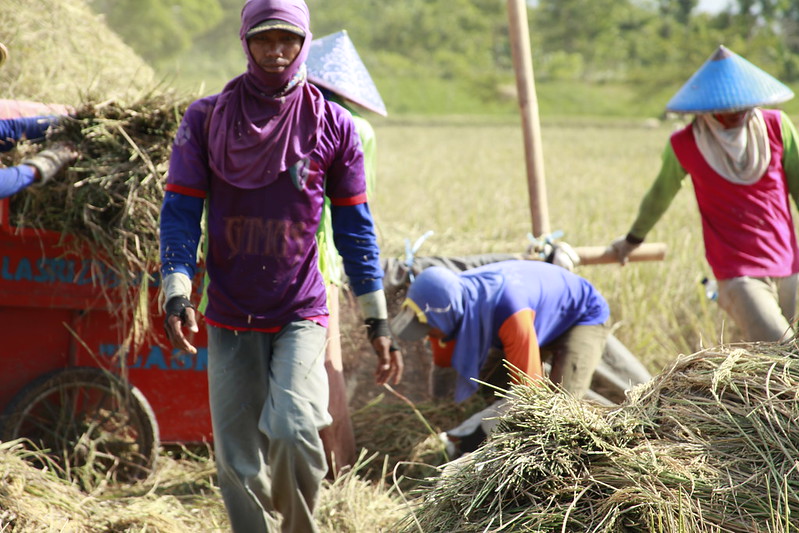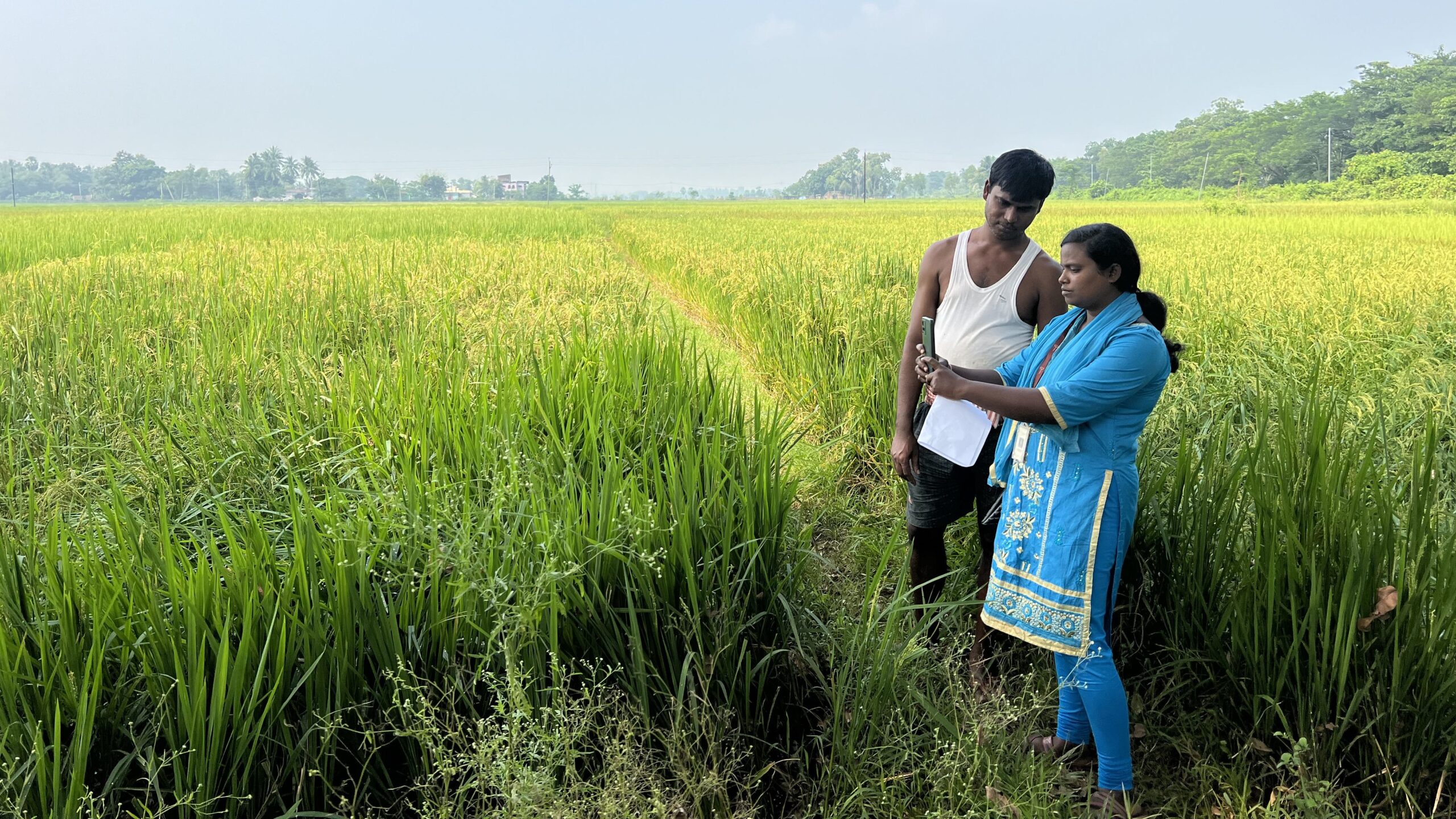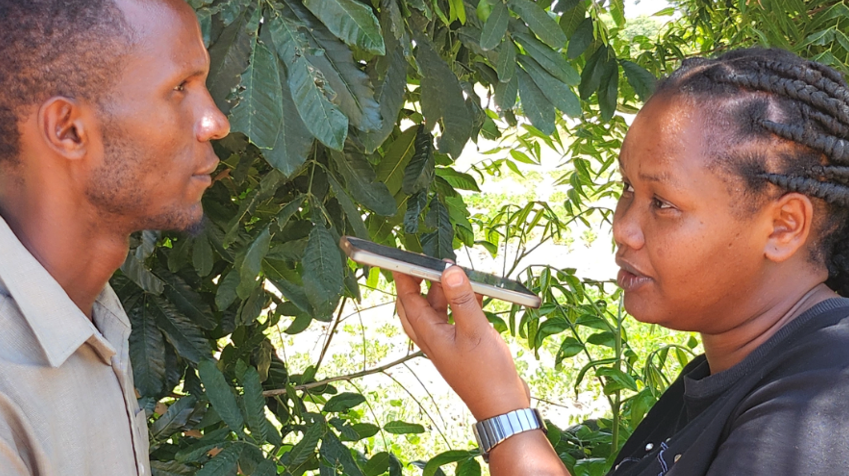Hunger is still on the march in Asia and the Pacific. About 518 million people in the region suffered from hunger in 2017, an increase of 1 million from the previous year. Farmers face growing challenges, including declining natural resources, degraded environments, climate change, and natural disasters. Meanwhile, ongoing economic and demographic transitions are driving rising demand for food and better nutrition. Three new studies from the Asian Development Bank (ADB) assess the potential for agricultural investments and policies to meet these challenges and end hunger in Asia and the Pacific. These studies were conducted by IFPRI in collaboration with ADB and are being launched during the Rural Development and Food Security Forum at ADB headquarters in Manila Oct. 28-30.
The reports are: Ending Hunger in Asia and the Pacific by 2030: An Assessment of Investment Requirements in Agriculture; Policies to Support Investment Requirements in Indonesia’s Food and Agriculture Development for 2020–2045; and Information and Communication Technology for Agriculture in the People’s Republic of China.
The Asia-Pacific and Indonesia studies use IFPRI’s International Model for Policy Analysis of Agricultural Commodities and Trade (IMPACT). The IMPACT modeling system allows analysis of socioeconomic and climate pathways with different assumptions about policy, agricultural research and development (R&D), and investments—to understand the possible impacts on food security and other agricultural outcomes, and to assess the investment costs required for climate change adaptation and for reducing hunger. IMPACT incorporates a linkage with the GLOBE global general equilibrium model for the Asia-Pacific study, and a computable general equilibrium dynamic economywide model for Indonesia (DEWI). These models are used to assess the economy-wide impacts of climate change and agricultural investments, including GDP, household income, and employment.
Investment strategies will need to confront the effects of climate change. Negative effects on agriculture will become much higher after 2030 but are still felt in 2030. The reference scenario includes medium global population and GDP growth and the high variant climate change scenario from the Intergovernmental Panel on Climate Change (IPCC), with projected investments in agricultural research and development, irrigation, and rural infrastructure of $41.7 billion annually, consistent with recent trends in these investments. In this scenario, climate impacts reduce yields and production, in turn leading to rising prices—partially offsetting production growth and reducing GDP. Food consumption also falls due to higher prices and lower income.
As a result, for the Asia-Pacific region, the climate change reference scenario leads to an increase in the number of hungry people by 38 million in 2030 compared to the no climate change scenario. This means the number of hungry people only declines from 507 million in 2015 to 362 million in 2030, slow progress.
The reports analyze three types of investments: In agricultural R&D; in improving water management by expanding irrigation and increasing basin-level water use efficiency (WUE); and in rural infrastructure to reduce marketing costs and post-harvest losses (PHL). These work through several pathways. R&D investments boost crop and livestock yields, reduce food prices, and increase farm income and economy-wide GDP through multiplier effects on the non-agricultural sector, and reducing hunger. Water investments boost the irrigated area planted, increase crop yields, and reduce prices, generating higher incomes. Infrastructure investments help to reduce post-harvest losses and marketing margins, improving farm profitability and boosting supply to consumers. These effects also increase farm and economy-wide income, reducing hunger.
The results show that increasing these three types of investments is highly effective in improving agricultural production, reducing prices, raising incomes, and reducing hunger. Agricultural R&D and rural infrastructure improvements have particularly large impacts on reducing hunger. Combining these investments in a more comprehensive scenario can effectively end hunger in the Asia-Pacific region. Total annual agricultural investments of $78.6 billion—an additional $36.9 billion on top of the reference scenario—are needed to move the proportion of hungry people in Asia and the Pacific below the threshold of 5% of total population defined as eliminating hunger by 2030.
Investments in health, nutrition, clean water and sanitation, and education are also crucial and essential to address hunger and childhood malnutrition. As in the Asia-Pacific region, the Indonesian agricultural sector and economy have made substantial strides in recent decades. Strong growth has promoted a structural transformation and refashioned the agrarian economy, with industry and services now playing dominant roles. However, about 22.0 million people in Indonesia still endure hunger. This country report examines the potential of agricultural investments to generate faster agricultural and economic growth and to improve food security. The results show that Indonesia can virtually end hunger by 2030 and fully eradicate hunger by 2045 with a combination of higher investments in agricultural R&D, expanding irrigated areas and water use efficiency (WUE), and rural infrastructure including roads, electricity, and railways.
R&D investment is particularly effective, boosting productivity and improving food security while cutting hunger in half. Investment in rural infrastructure to reduce PHL and marketing costs also markedly improve food security. Investments in irrigation expansion also reduce hunger, although not by as much as the other types of investments, and reduce water use by 7%. Removal of the costly fertilizer subsidy and reinvestment of the funds saved in R&D also increases agricultural productivity and economy-wide GDP and reduces hunger. To further enhance food system productivity, these investments can be combined into a more comprehensive portfolio together with targeted investments in crop and livestock enterprises. The comprehensive investment scenario is projected to end hunger in Indonesia by 2034.
In addition to ending hunger, the comprehensive investment scenarios have big economy-wide benefits. The comprehensive investment scenario is projected to increase annual total economic benefits by Rp1,834 trillion in 2045, or about $129 million at current exchange rates.
The Indonesia report concludes with several policy recommendations:
- Spending on agricultural research and development, especially crop and livestock breeding, should be increased significantly.
- Infrastructure investments, including rural roads, electricity cell phone towers, markets, cold chains, and processing facilities, should be expanded in partnership with the private sector.
- Increased investment in irrigation expansion and in improvement of existing irrigation systems is warranted, with careful attention to cost-effectiveness.
- Extension services and agricultural education need to be upgraded to expand the adoption of both conventional and advanced agricultural technology such as precision farming.
- Legal and regulatory reforms should be implemented to reduce barriers to the adoption of new seed varieties and other agricultural technologies.
- Fertilizer subsidies should be phased out and invested in increased agricultural research and development and targeted direct income support for small farmers
The China report focuses specifically on the role and impact of information and communication technology (ICT), particularly e-commerce in rural areas. ICT has been developed and adopted rapidly in recent years in China, and has a growing influence in business development. The report documents trends in major applications of ICTs, identifying the key factors and major constraints in adopting them, examining their likely impacts, and noting the policy implications for further development in rural areas. Because ICT applications cover wide areas of the rural economy, the study focuses on rural e-commerce and its impacts on farmers.
The number of internet users in China increased from 210 million (a 16% adoption rate) in 2007 to 772 million (56%) in 2017. China’s mobile phone subscriptions increased from 50.4 million in 2007 to 753 million in 2017. E-commerce is growing even faster. The value of online sales (1.9 trillion yuan or $311 billion) surpassed that of the United States in 2013. Since then, China has become the largest market for e-commerce in the world. By 2016, the figure reached 5.3 trillion yuan or $767 billion, accounting for about 15% of total retail sales. The application of drones in agriculture is another fast-emerging business.
However, internet penetration and e-commerce are not distributed evenly across the country, a national survey shows. Coastal and more developed provinces have higher rates of internet penetration than other provinces and e-commerce is more developed in urban than rural areas. The survey also shows that while e-commerce in agriculture is still a new business for farmers, many are willing to engage in online business. The proportion of villages with at least some farmers participating in e-commerce increased from 41% in 2016 to 63% in 2017. However, only a tiny number of farmers—3%—were participating in 2016, though more than one fourth indicated they were willing to sell their agricultural products through e-commerce. For those who are not willing to sell online, the main reasons are lack of knowledge and skills and storage and preservation facilities, along with high logistical costs.
But a survey of rural areas in the more economically-advanced regions of Shandong and Zhejiang shows the high potential of rural e-commerce. Nearly 60% of surveyed households participated in e-commerce during 2016-2017, and the analysis shows that e-commerce raised farmer’s income and self-employment. The price of agricultural commodities sold online is much higher than for those sold offline. Although the marketing cost of selling products online is generally higher than that of offline, online sales yielded farmers net profits. E-commerce also increased farmers’ self-employment, as online sales are much more labor intensive than offline sales.
The report recommends a number of policies to facilitate applications of ICT and e-commerce in rural China:
- Investment in storage and transportation for the development of e-commerce in agriculture.
- Investment in farmers’ capacity building through practical training on how to engage in e-commerce.
- Providing financial and credit supports for farmers, particularly to small farmers, in e-commerce business.
- Facilitating farmers working together in e-commerce.
- Improving market regulations and providing a favorable market environment for the development of agricultural e-commerce.
- Promoting more inclusive e-commerce development in rural areas.
E-commerce does not develop on its own, nor does it have equal impacts everywhere. Regions with better infrastructure and suitable locations are more likely to benefit from e-commerce. Tech-savvy farmers with relevant knowledge and skills and other resources will benefit more from e-commerce. The government should focus its efforts on those who may not benefit that much from, or even be hurt by, the development of agricultural e-commerce.
Mark Rosegrant is Research Fellow Emeritus with IFPRI’s Director General’s Office.







